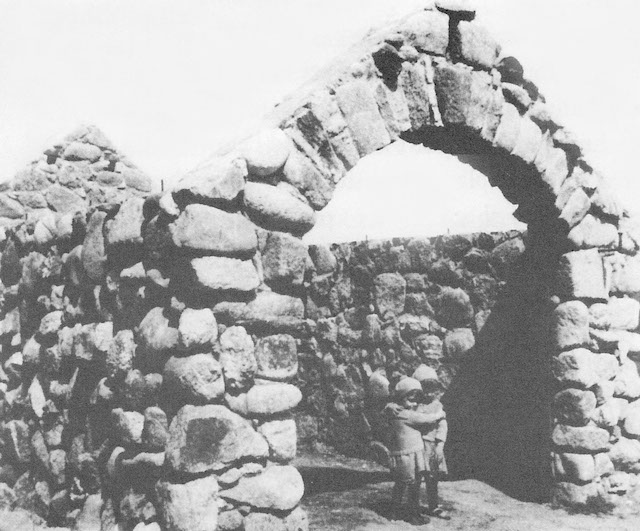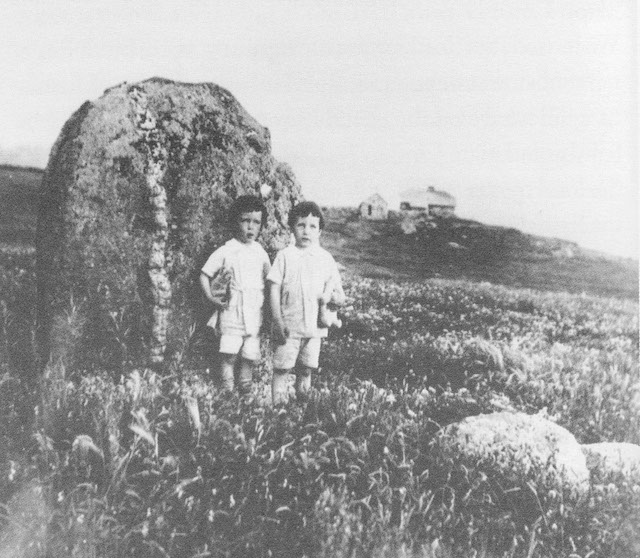The operator of the golf course at Carmel Point went to war around June 1917. By then, work on the new golf course at Pebble Beach had been going on for about a year, and the Carmel course fell into neglect. It may have been that the competitive pressure from Pebble Beach next door dissuaded the landowners from remaining in the golf business. Soon after the war ended, Pebble Beach Golf Links opened and Carmel Point Golf Course was subdivided for residential development.

Tower & twins (Tor House Foundation)
Robinson and Una Jeffers took advantage of the opportunity and purchased 16 of the new lots. They purchased 17 more over the next three years. They paid Mike Murphy, a prominent Carmel builder, to build them a Tudor cottage on the spot that had previously been the 10th tee of the golf course. The spot was on a low granite knoll which Robin and Una called a “tor” in reference to the rocky hills of Dartmoor in Devonshire, England.
Jeffers hired himself on as an apprentice to Murphy’s stonemason, perhaps to quicken completion of the job; perhaps to save money. He didn’t have much else to do. He performed tasks like carrying stones and mixing mortar. The family moved into their new home in mid-August, 1919.
Jeffers took to stonemasonry while he continued to search for his poetic voice. It had been three years since he published a book of poems, and he hadn’t been terribly satisfied with that. He’d written some good poems over those three years: Fauna, Mal Paso Bridge, To His Father, and Suicide’s Stone, but nothing remarkable. He did write, but it seems, not a lot. He referred to this dry spell in a letter that he wrote to Una years later (1938), when he was in the throes of a more damaging drought:
It is a little like my extravagances of 1917 to ’19, except that I was uncritical then, and able to keep myself fairly quiet by not writing a lot of foolishness. (Now I know too much.) After that we began to make Tor House—and that was worth while,—quite aside from the accidental birth of my own mind.
— The Stone Mason of Tor House (2007 edition), page 149

Twins and Altar Stone, ca. 1921 (Tor House Foundation)
The poet and his family now had a house by the sea, but the family car was homeless (more exposed to the elements than it had been at their previous homes in the Carmel woods), so Jeffers built a detached garage for the car. This was a learning experience, as Jeffers hadn’t completed his apprenticeship. Seeing as he was using stone, he employed a Roman arch for the garage doorway. After completing the garage, he discovered that his Roman arch lacked the necessary buttresses (because the arch presses outward against walls), so he quickly remedied that shortcoming. It is this accomplishment, particularly in view of the lessons Jeffers learned from it, that represents Jeffers first significant achievement as a stonemason — and he did it for his car. —Next—>